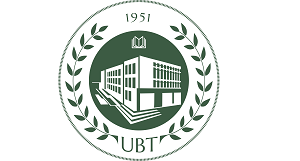1Agricultural University of Tirana,Faculty of Agriculture and Environmental Science, Tirana, ALBANIA,
2Polis University, Tirana, ALBANIA,
*Corresponding author e-mail: eridana.cuni@gmail.com; ecuni@ubt.edu.al
Abstract:
Serpentine soils are formed on ultrabasic or metamorphic rocks (ophiolithic, magmatic or meta-magmatic rocks). Serpentines are distributed all over the world, including in the Balkans and in Albania. Serpentines are difficult terrains for plant growth because of metal content, high Mg:Ca ratio and lack of nutrients. Tolerant and heavy metals hyperaccumulator plants represent species that are quite well adapted and have evolved to face the high Ni content and low macronutrient levels in these soils. The purpose of this study was to observe Alyssum murale as Ni hyperaccumulator, differences between the botanical varieties and their capacity for the accumulation of nickel. Plant and soil sampling was conducted at twelve serpentine sites of Alyssum murale in Albania. The results show that Alyssum murale represented the most frequent species associated together with a large number of serpentine tolerant species. The quantity of Ni in tissues of Alyssum murale samples was very high (up to 2 % DM). Three Alyssum murale varieties (chalcidium, chlorocarpum and subvirescens) were identified in southeast area of Albania.. The highest Ni concentration was observed in Alyssum murale var. chlorocarpum – more than 2% DM. Soil samples contain high concentration of Ni, Cr, Co and Mg and high Mg/Ca ratio from 4.4 to 9.5 corresponding to serpentine soil material. The results confirm that Alyssum murale from Albanian serpentine soils have a high potential for Ni phytoextraction and phytomining because of high biomass production and the efficiency of Ni bioaccumulation from soil.
Keywords: Serpentine, soil, plant, hyperaccumulator, Alyssum murale.

